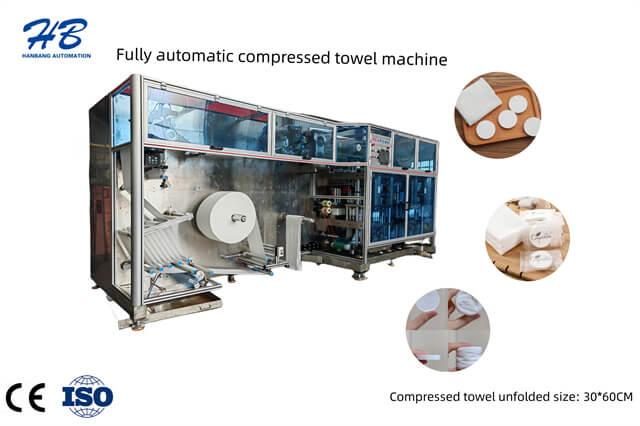Author:HB Nonwoven MachineryFROM:Compressed Towel Machine Manufacturer TIME:2024-04-30
Non-woven embossing perforating machines play a crucial role in the maintenance and care of the diaper and sanitary napkin industry. These machines are responsible for creating the intricate patterns and designs that enhance the functionality and aesthetic appeal of these essential products. Proper maintenance and care of these machines are vital to ensure their longevity and optimal performance. In this article, we will explore the maintenance and care practices for non-woven embossing perforating machines

Regular cleaning and lubrication are essential for the smooth functioning of non-woven embossing perforating machines. The machine should be cleaned after every use to remove any debris or residue that may accumulate during the embossing process. It is important to follow the manufacturer's instructions for cleaning agents and methods to avoid damaging the machine components.

Frequent inspection of machine components is necessary to identify any signs of wear or damage. This includes checking the embossing rollers, perforating dies, and other parts for any cracks, chips, or excessive wear. If any issues are detected, prompt repair or replacement is crucial to prevent further damage and ensure consistent product quality.

Regular calibration and adjustment of the machine are essential to maintain precise embossing and perforating accuracy. This ensures that the patterns and perforations on the non-woven material are consistent and meet the desired specifications. Calibration should be performed by trained technicians using specialized tools and equipment.
Proper training for machine operators is essential to minimize the risk of errors and accidents during operation. Operators should be familiar with the machine's functions, safety protocols, and troubleshooting techniques. Regular training sessions and refresher courses can help operators stay updated with the latest industry practices and maintain machine efficiency.
Implementing a preventive maintenance schedule is crucial to identify and address potential issues before they escalate into major problems. This includes regular inspection of belts, gears, bearings, and other moving parts for signs of wear or misalignment. The schedule should also include routine replacement of consumable parts, such as cutting blades and embossing rollers, to maintain optimal performance.
When the non-woven embossing perforating machine is not in use, it should be stored in a clean and dry environment to prevent corrosion and damage. Special attention should be given to protecting sensitive components, such as the control panel and electrical connections, from dust and moisture. Covering the machine with a protective sheet or using a dedicated storage area can help prolong its lifespan.
Inevitably, issues may arise with the non-woven embossing perforating machine during its lifespan. Timely troubleshooting and prompt repairs are vital to minimize downtime and ensure uninterrupted production. It is recommended to have a designated technician or maintenance team to handle any unexpected mechanical or electrical problems that may occur.
To keep up with evolving industry demands and technological advancements, regular upgrades may be necessary for non-woven embossing perforating machines. This could involve replacing outdated components, integrating automation features, or adopting new software systems. Staying updated with the latest innovations ensures enhanced productivity, efficiency, and product quality.
Proper maintenance and care for non-woven embossing perforating machines are essential to ensure their longevity, performance, and product quality. By following a regular maintenance schedule, conducting inspections, providing operator training, and staying updated with technological advancements, manufacturers can maximize the efficiency and effectiveness of these crucial machines in the diaper and sanitary napkin industry.





